HYPOX
-
2010-2012
-
2010-2012

In situ monitoring of oxygen depletion in hypoxic ecosystems of coastal and open seas, and land-locked water bodies (ENV.2008.4.1.2.1, FP7, Contract Number: 226123)
Funding: European Union, 7th Framework Programme

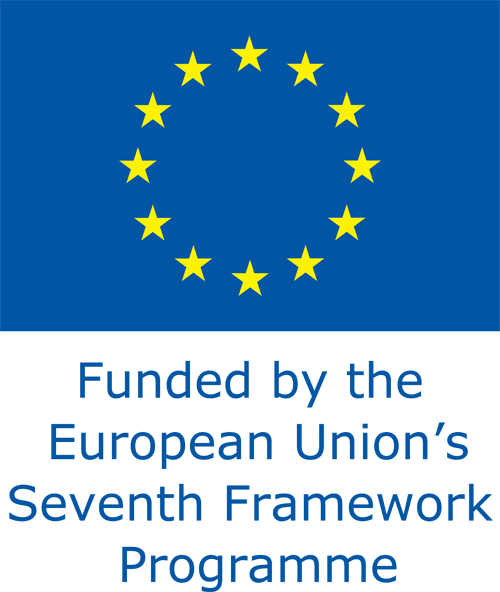
The core objective of the HYPOX project was to better understand the causes of hypoxia formation and improve the predictive capability of models. To this end, HYPOX initiated a comprehensive, state-of-the-art program for monitoring oxygen and related parameters in a variety of European aquatic systems that differ in oxygen status or in their sensitivity to change. HYPOX working areas are subject to a large variety of natural and anthropogenic causes of oxygen depletion and show a wide range in the severity of oxygen deficiency. They are located in coastal and open seas, including the North Atlantic–Arctic Ocean transition (Fram Strait), four contrasting sites in the Black Sea (Bosporus outlet area, Romanian Shelf, Crimean Shelf, Black Sea basin), and two Baltic Sea sites (Gotland Basin and Boknis Eck in Eckernförde Bay). Several lagoons and embayments in the Mediterranean Greek Ionian Sea (Katakolo Bay, Amvrakikos Gulf, and Aetoliko Lagoon) were also studied, as well as fjord systems (Koljoe Fjord in Sweden and Loch Etive in Scotland).





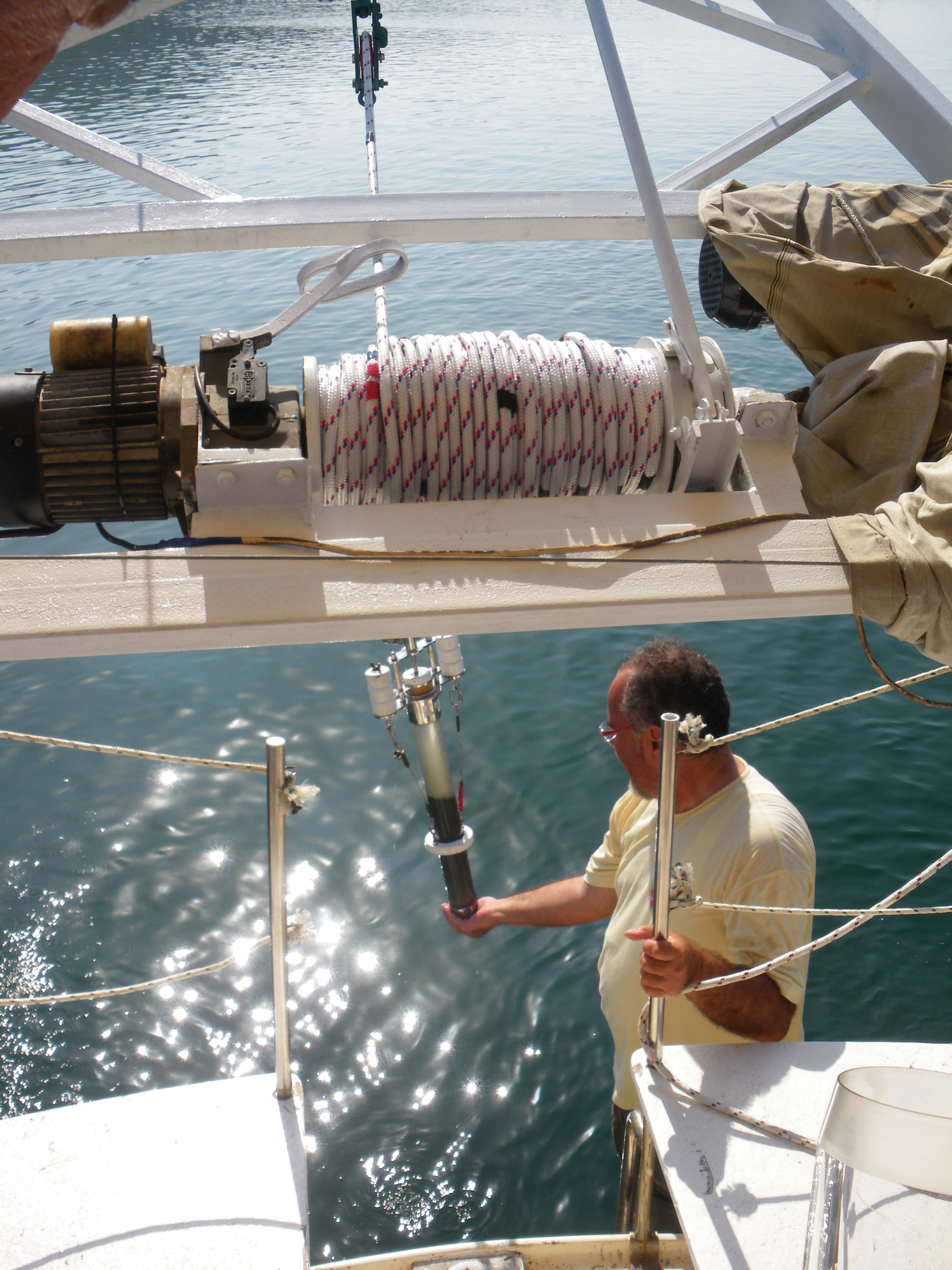
Photos: Geophysical, oceanographic, and core-sampling surveys in Amvrakikos Gulf for the HYPOX project.
In the framework of HYPOX project Oceanus-Lab with the collaboration of INGV (Istituto Nazionale di Geofisica e Vulcanologia), performed an integrated marine geological, geochemical, and oceanographic study of the environmental impact of hydrocarbon-rich fluid seepage occurring in two areas located in lagoons and embayments in Western Greece, i.e., Katakolo Bay, Aetoliko Lagoon, and Amvrakikos Gulf.
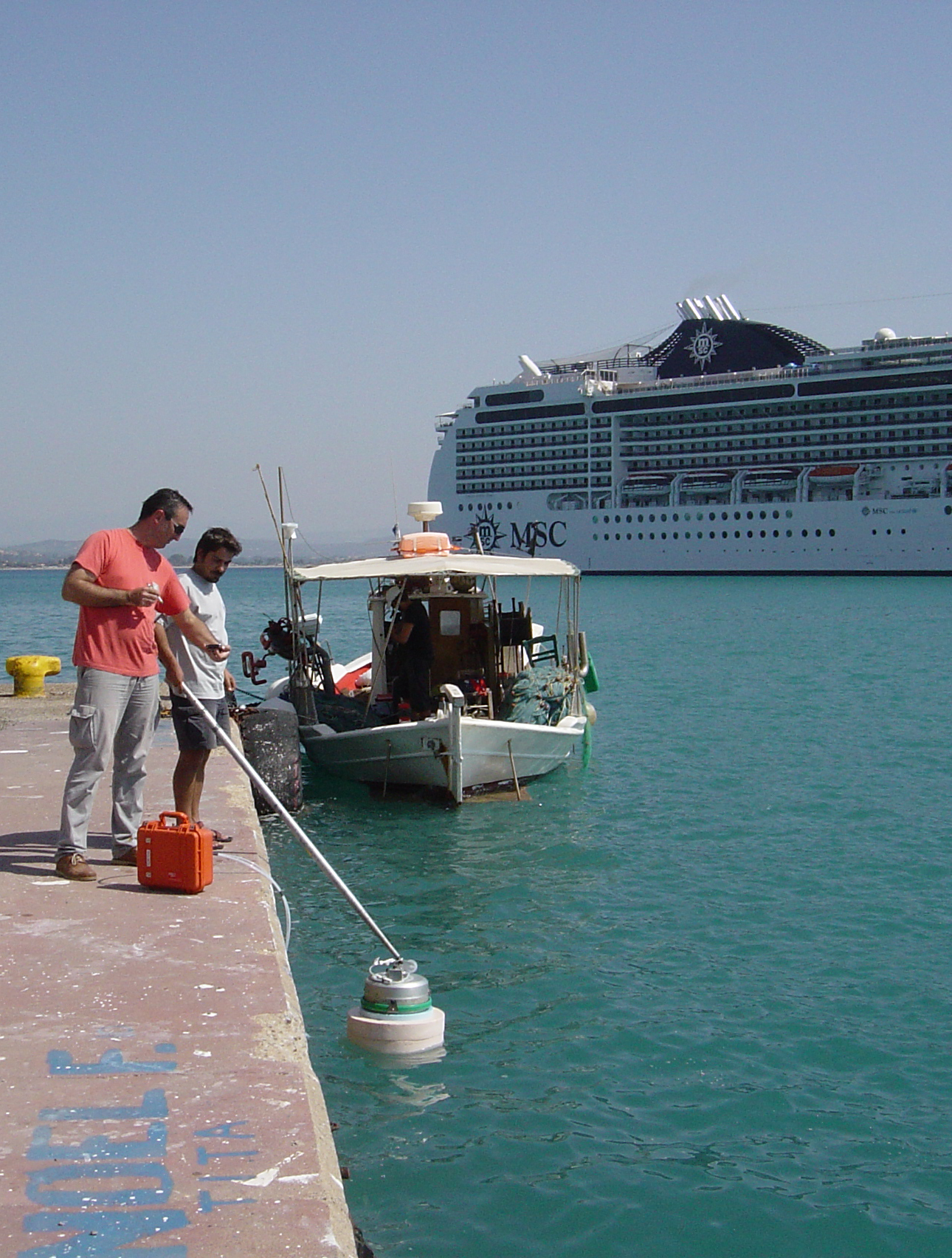
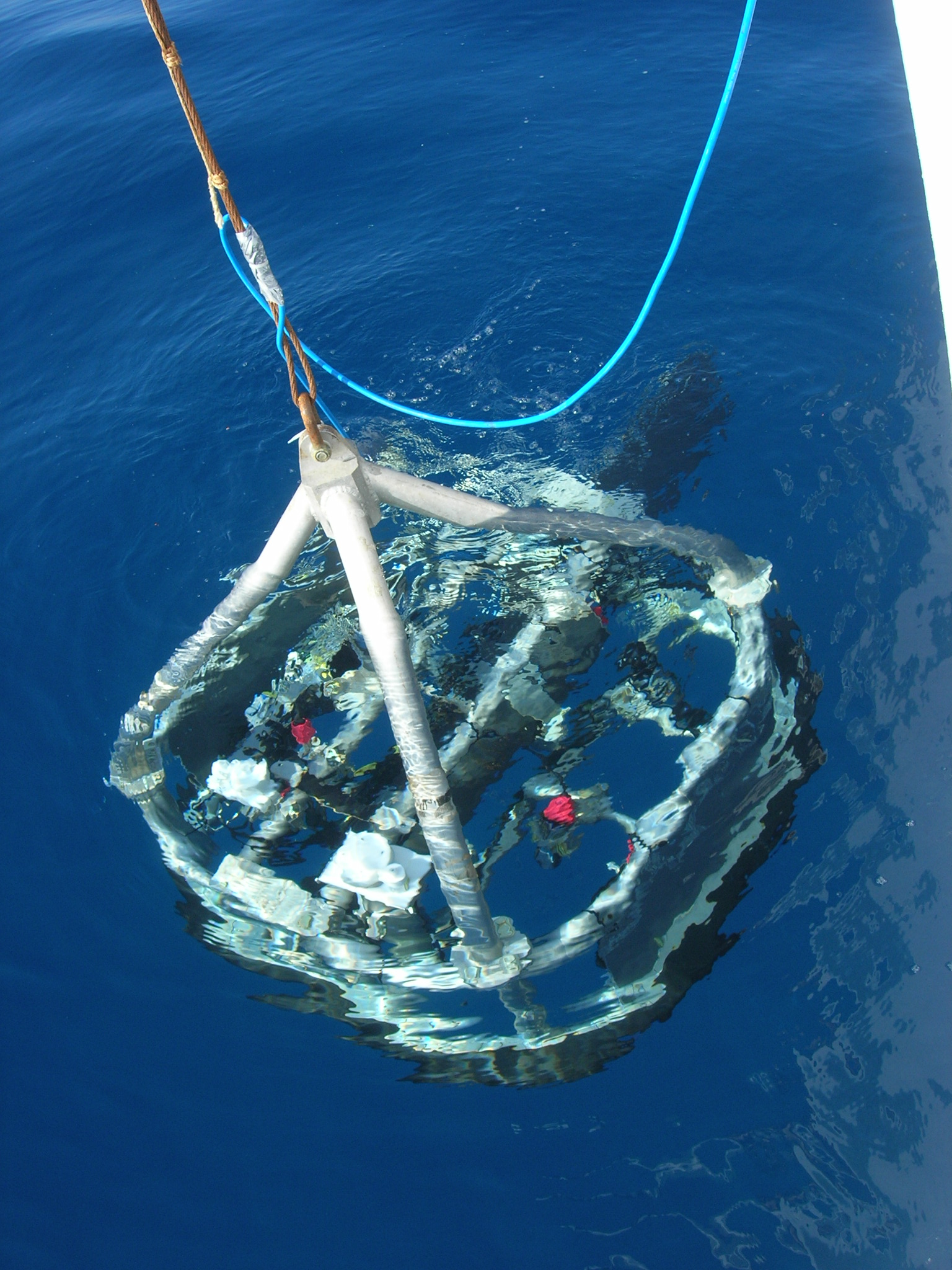
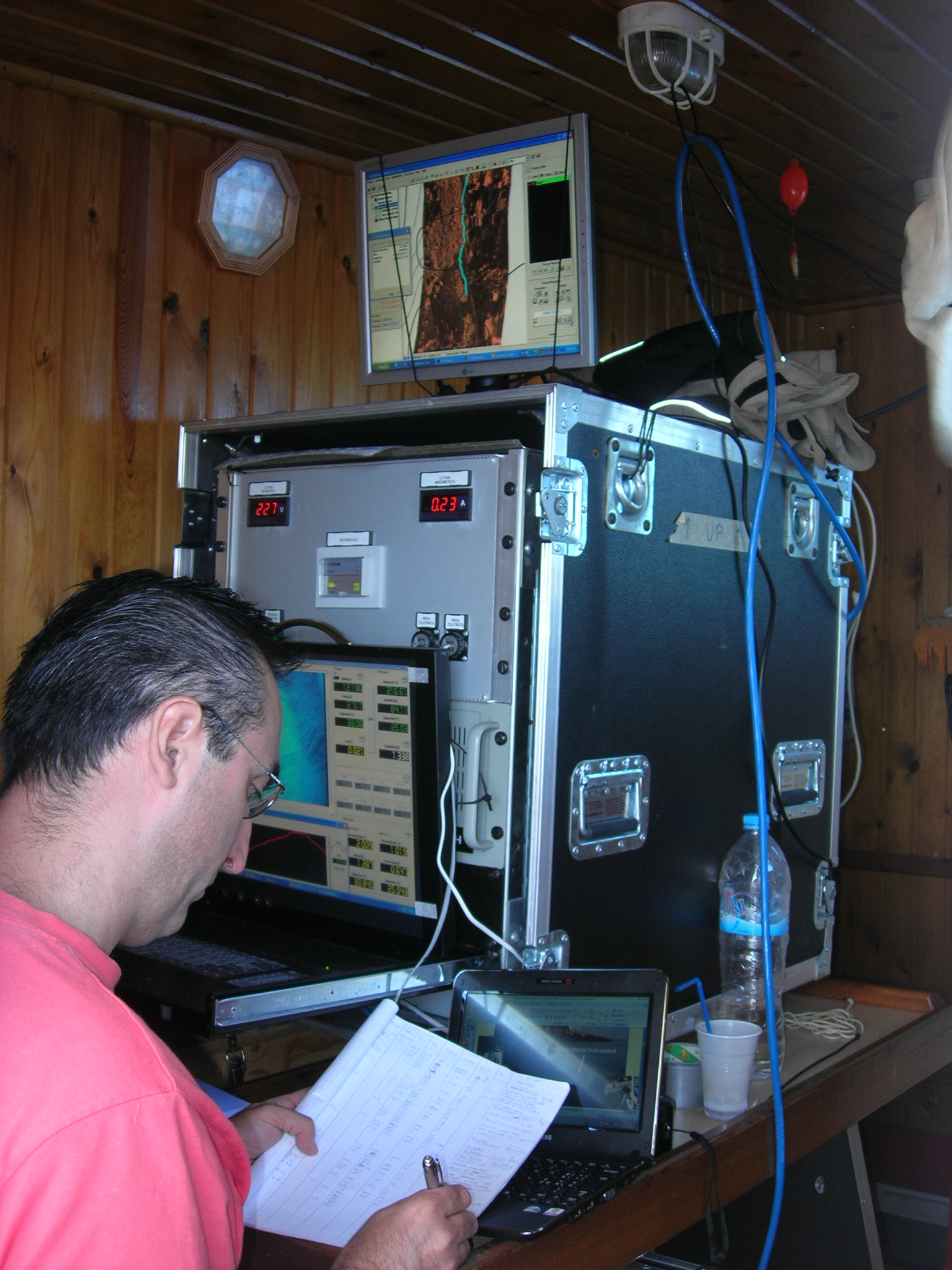


Photos: Geochemical, oceanographic, and geophysical surveys as well as the deployment and recovery of a benthic observatory: the Gas Monitoring Module (GMM), that monitored gas seepage ans oceanographic parameters for 101 days in Katakolo Bay.
Along the Ionian coast of Western Greece, hypoxia was specifically studied in relation to geological drivers, i.e., the seepage at the seafloor of reducing gases (CH4 and H2S) from deep sedimentary rocks. The investigations were conducted in the main petroliferous area in Greece, which is characterized by active tectonics and salt diapirism inducing important gas and oil seepage phenomena, both onshore and offshore (Papatheodorou et al., 1993; Hasiotis et al., 2002; Etiope et al., 2006; Karakitsios and Rigakis, 2007, Kamberis et al., 2000). Our study was focused in almost land-locked water bodies (Amvrakikos Gulf and Aetoliko Lagoon) and open bays (Katakolo Bay) which can be distinguished in two types of areas in terms of gas seepage:
- low and episodic gas seepage, i.e., in Amvrakikos Gulf and Aetoliko lagoon where episodic gas seepage is evidenced by seafloor pockmarks and where fish mortality has been occasionally reported and associated to hypoxic/anoxic conditions and elevated H2S inputs;
- high and continuous gas seepage, i.e., in Bay of Katakolo, an open sea coastal zone affected by a considerable, active and permanent seepage of natural gas, evidenced by wide fields of gas bubbles and gas charged sediments.



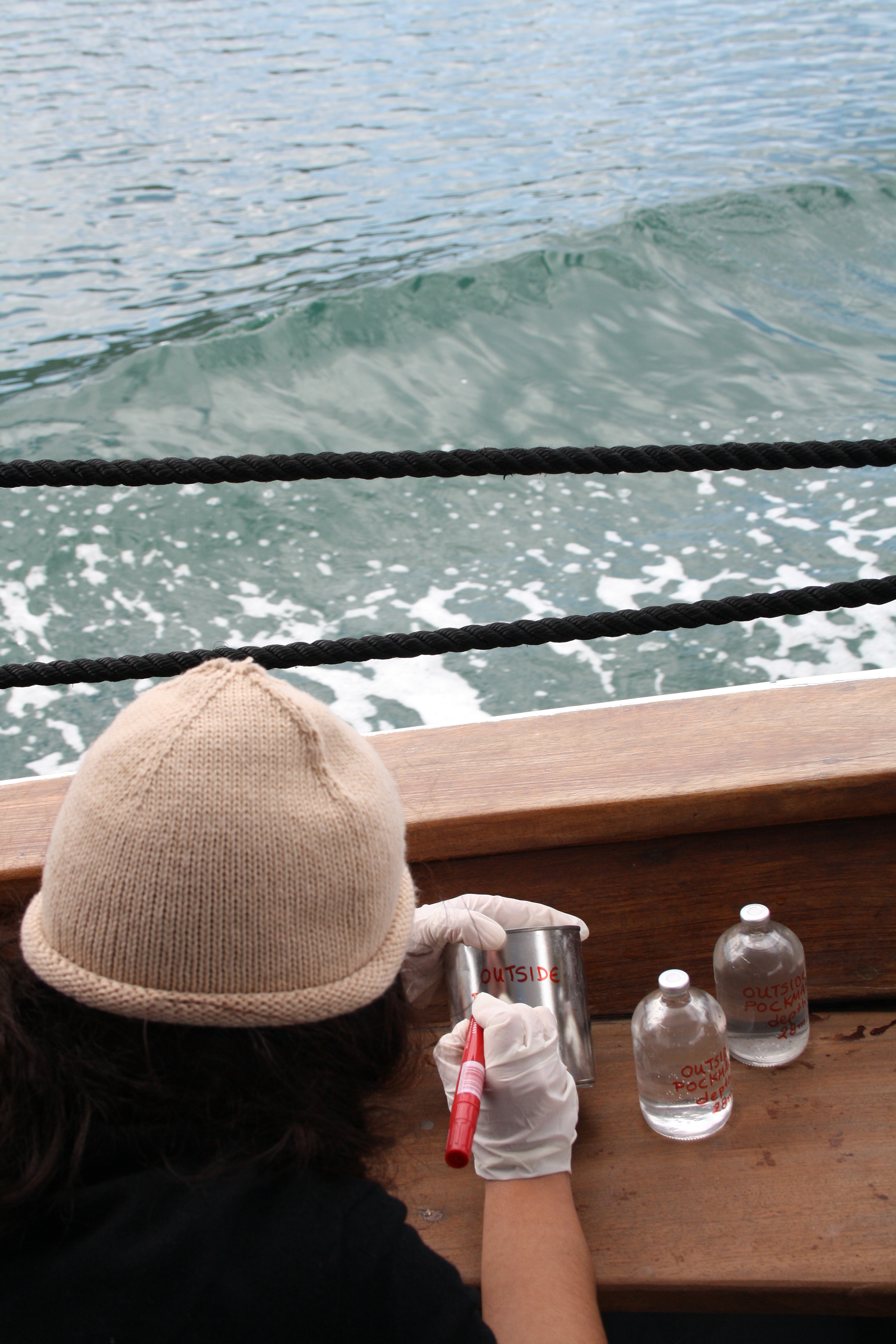
Photos: Geochemical and oceanographic surveys in Amvrakikos Gulf.
Onshore, around the Amvrakikos Gulf and Aetoliko lagoon, and both onshore and offshore Katakolo Bay, methane is thermogenic, from deep source rocks (Rigakis and Karakitsios, 1998) and is frequently associated to H2S produced by interactions between deep evaporites and hydrocarbons (Etiope et al., 2006).





Photos: Geochemical, oceanographic and core sampling surveys in Aetoliko Gulf.
Publications in the framework of the HYPOX project from Oceanus-Lab team:
Kordella, S. (2021). Fluid seepage on shore and offshore Western Greece. Ph.D. Thesis. Department of Geology, University of Patras. Greece. https://nemertes.library.upatras.gr/jspui//handle/10889/14524
Kordella, S., Christodoulou, D., Fakiris, E., Geraga, M., Kokkalas, S., Marinaro, G., Iatrou, M., Ferentinos, G., Papatheodorou, G. (2021). Gas seepage-induced features in the hypoxic/anoxic, shallow, marine environment of Amfilochia Bay, Amvrakikos Gulf (Western Greece). Geosciences 11(1), 27. https://doi.org/10.3390/geosciences11010027
Etiope, G., Christodoulou, D., Kordella, S., Marinaro, G., Papatheodorou, G. (2013). Offshore and onshore seepage of thermogenic gas at Katakolo Bay (Western Greece). Chemical Geol. 339, 115–126. https://doi.org/10.1016/j.chemgeo.2012.08.011
Ferentinos, G., Papatheodorou, G., Geraga, M., Iatrou, M., Fakiris, E., Christodoulou, D., Dimitriou, E., Koutsikopoulos, C. (2010). Fjord water circulation patterns and dysoxic/anoxic conditions in a Mediterranean semi- enclosed embayment in the Amvrakikos Gulf, Greece. Estuar. Coast. Shelf Sci. 88, 473-481. https://doi.org/10.1016/j.ecss.2010.05.006
References
Etiope, G., Papatheodorou, G., Christodoulou, D., Ferentinos, G., Sokos, E., Favali, P. (2006). Methane and hydrogen sulfide seepage in the NW Peloponnesus petroliferous basin (Greece): origin and geohazard. AAPG Bulletin., 90, 5, 701-713.
Hasiotis, T., Papatheodorou, G., Ferentinos, G. (2002). A string of large and deep gas-induced depressions (pockmarks) offshore of Killini Peninsula, western Greece. Geo-Mar. Lett. 22, 142–149.
Kamberis, E., Rigakis, N., Tsaila-Monopolis, S., Ioakim, C., Sotiropoulos, S. (2000). Shallow biogenic gas-accumulations in Late Cenozoic sands of Katakolon peninsula, Western Greece: Geological Society of Greece, Special Publications, no. 9, pp.121-138.
Karakitsios, V., Rigakis, N. (2007). Evolution and petroleum potential of Western Greece. J. Pet. Geol. 30(3), 197-218.
Papatheodorou, G., Hasiotis, T., Ferentinos, G. (1993). Gas charged sediments in the Aegean and Ionian seas, Greece. Mar. Geol. 112, 171-184.
Rigakis, N., Karakitsios, V. (1998). The source rock horizons of the Ionian Basin (MW Greece). Mar. Pet. Geol. 15, 593-617.
Documents
Location
Katakolo Bay, Amvrakikos Gulf, Aetoliko Lagoon, Western Greece
Contact Person
